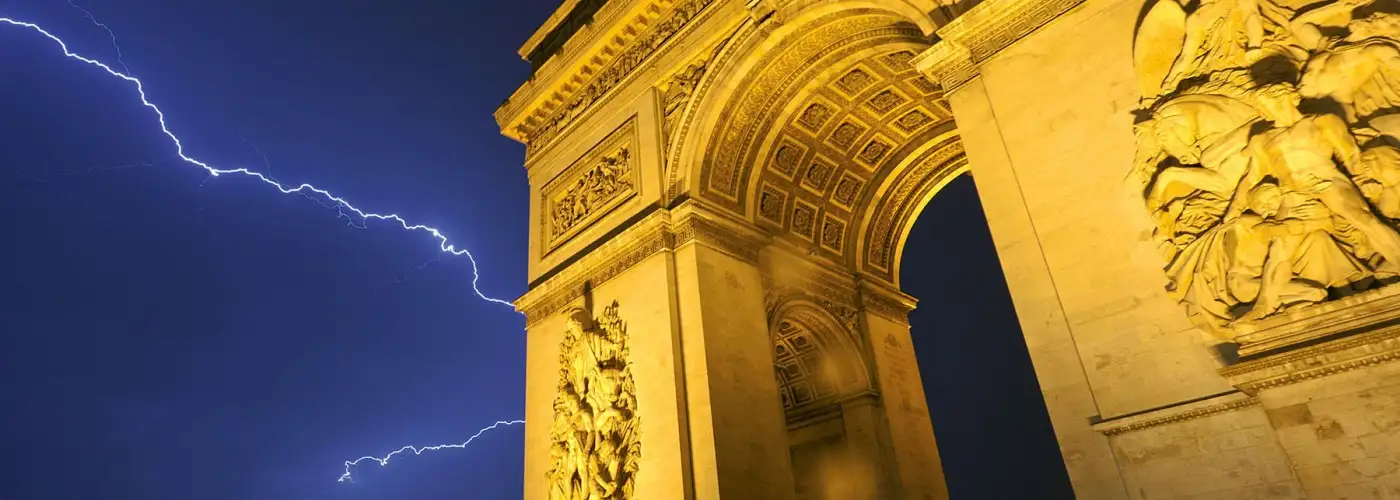Working on my TV shows and guidebooks in Europe, I try to get the straight story on history, but it can be tricky. I keep remembering Napoleon’s quote: “What is history but a myth agreed upon?” The 200th anniversary of the Battle of Waterloo prompted me to ponder the opportunities Paris offers to anyone who’d like to brush up on their Napoleonic facts.
Napoleon’s life is as fascinating as his place in history. Just a humble kid from Corsica, he went to military school in Paris. He rose quickly through the ranks during the tumultuous years of the French Revolution. By 1799 he was the ruler of France. After that, within five years, France had conquered most of Europe, and Napoleon declared himself emperor of it all.
As the head of France’s grand million-man army, he blitzed Europe. His personal charisma on the battlefield was said to be worth 10,000 additional men. But it all came to an end on farmland 15 miles south of Brussels. Two centuries later, the Belgians spiffed up the Waterloo battlefield for the bicentennial, but to get a better feel for Napoleon, head to Paris.
Related: What Not to Do in Paris
South of the city, the Château de Fontainebleau has more Napoleon connections than any other palace in France, featuring both his personal apartments and an adjacent museum. Napoleon’s throne room is the only one in France with its original furniture. You’ll see the emperor’s bed, the grand “power desk” where he worked, and the humiliatingly little table where he abdicated. There’s also a tent-like room dedicated to Napoleon at war, with his small-but-iconic battle coat and hat, a field cot, and first-class camp gear.
Grand paintings portray the emperor and his first wife, Josephine, after their coronation. Napoleon aspired to create his own family dynasty, but Josephine was too old to have children. To turn his Corsican blood blue, he divorced Josephine and married a Habsburg. You’ll see a portrait of his second wife, Empress Marie-Louise, who provided what he called “a royal womb.”
Looking at the final painting, which depicts Napoleon with symbols of the legal system he gave France, the “Code Napoleon”—it’s fascinating to consider the mix of ideals, charisma, and megalomania of this leader. This revolutionary hero came out of a movement that killed off the Old Regime—only to create a new Old Regime.
There’s no better symbol of Napoleon’s oversized ego than Paris’ Arc de Triomphe. Patterned after the ceremonial arches of ancient Roman conquerors (but more than twice the size), it celebrates Napoleon as emperor of a “New Rome.” On the arch’s massive left pillar, a relief sculpture shows a toga-clad Napoleon posing confidently, while an awestruck Paris—crowned by her city walls—kneels at his imperial feet. Napoleon died before the Arc’s completion, but it was finished in time for his 1840 funeral procession to pass underneath, carrying his remains (19 years dead) from exile to Paris.
Related: A Sweet Trip to Paris (in Pictures)
Elsewhere in Paris, the complex of Les Invalides—a former veterans’ hospital built by Louis XIV—has various French military collections, collectively called the Army Museum. Here, in addition to galleries on World War I and World War II, you’ll see plenty of Napoleon memorabilia: a bed with mosquito netting, a director’s chair, his overcoat and pistols, and a table that you can imagine his generals hunched over as they made battle plans. Napoleon’s beloved Arabian horse—Le Vizir—weathered many a campaign with Napoleon, grew old with him in exile, and now stands stuffed and proud. Not everything here is old and stuffy—the museum also features high-tech exhibits such as a projection screen that maps the course of the Battle of Waterloo.
At the other end of the complex, Napoleon’s tomb rests beneath a dome that glitters with 26 pounds of thinly pounded gold leaf. Enter the church, gaze up at the dome, then lean over the railing and bow to the emperor lying inside the scrolled, red porphyry tomb. If you’ve ever considered being absolute dictator of a united Europe, come here first. Hitler did, but still went out and made the same mistakes as Napoleon. (Hint: Don’t invade Russia.)
After Waterloo, Napoleon was sent into exile on the island of St. Helena. Once the most powerful man in the world, he spent his final years as a lonely outcast suffering from ulcers, dressed in his nightcap and slippers, and playing chess, not war.
While you’re visiting these places, it’s instructive to ponder these symbols of war, empire, and revolution. Why are today’s French so hell-bent on defending their civil liberties? Perhaps it has to do with their heritage of struggling so long and hard to overcome the stubborn abuse of power to earn their freedom. When you travel to Paris, it’s clear: Napoleon has left today’s visitors with some amazing and thought-provoking sights.
You Might Also Like:
- Europe’s Cheapest Cities This Year
- Secrets to Booking the Cheapest Summer Europe Flight Ever
- Rick Steves: Artisan Europe
Rick Steves (www.ricksteves.com) writes European travel guidebooks and hosts travel shows on public television and public radio. Email him at [email protected] and follow his blog on Facebook.
(Photo: Dominic Arizona Bonuccelli)
We hand-pick everything we recommend and select items through testing and reviews. Some products are sent to us free of charge with no incentive to offer a favorable review. We offer our unbiased opinions and do not accept compensation to review products. All items are in stock and prices are accurate at the time of publication. If you buy something through our links, we may earn a commission.
Top Fares From
Today's Top Travel Deals
Brought to you by ShermansTravel
Kenya: 14-Night Tour, Incl. Tanzania &...
smarTours
 vacation
$7125+
vacation
$7125+
7-Night Bermuda Cruise From Round-Trip Cruise...
Norwegian Cruise Line
 cruise
$1036+
cruise
$1036+
Ohio: Daily Car Rentals from Cincinnati
85OFF.com
 Car Rental
$19+
Car Rental
$19+




